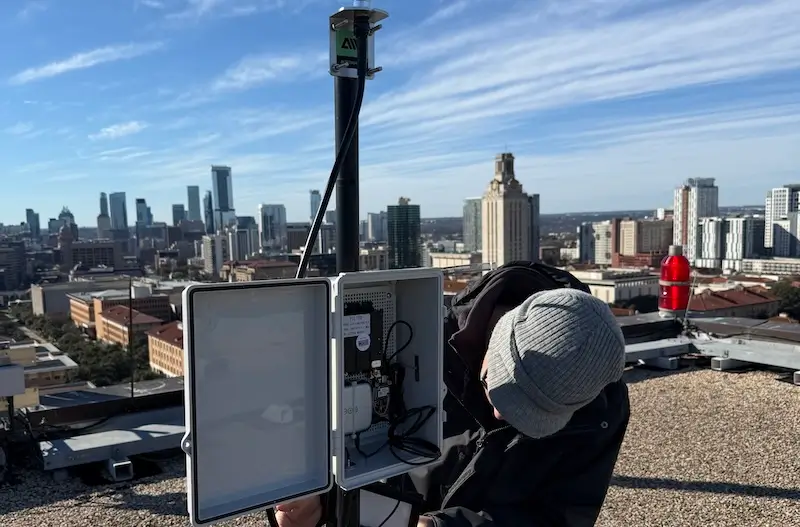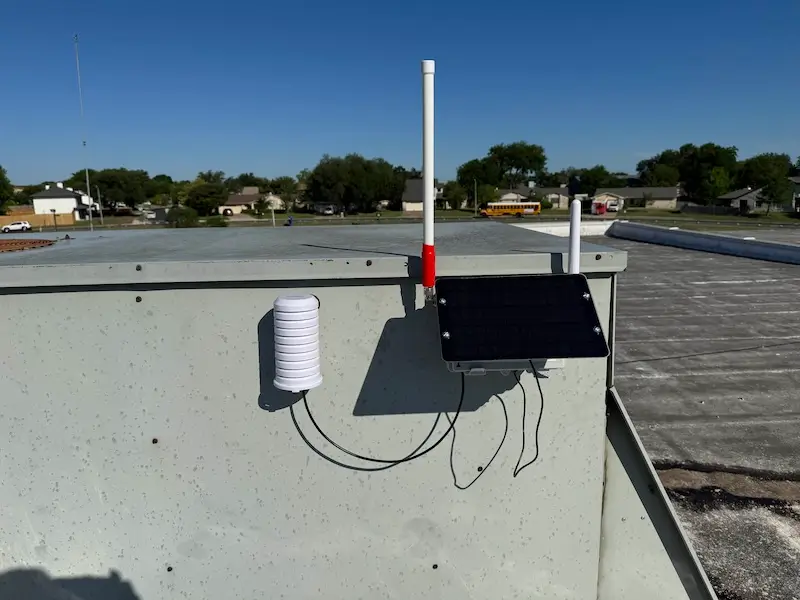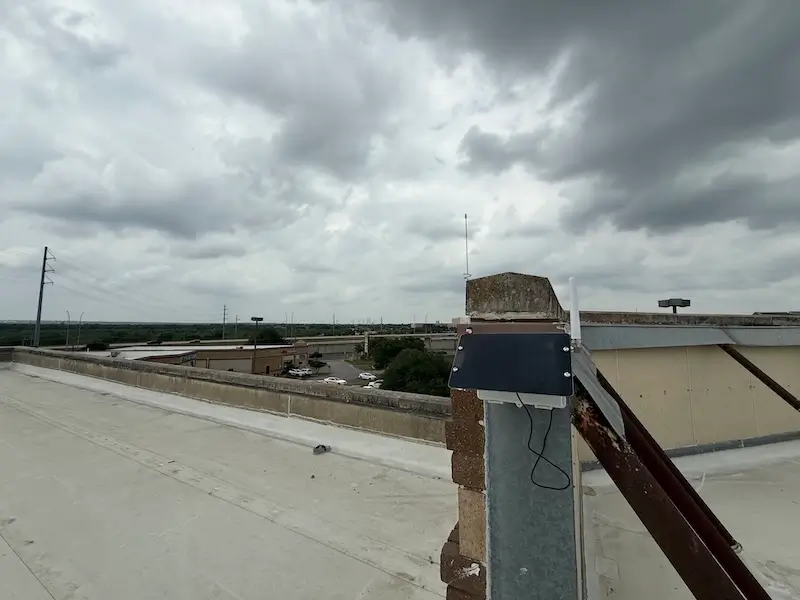FAQ: Hosting an AustinMesh Node on Your Property
1. What exactly is the node being used for?
- Expands a free, open source, community mesh network using low-power radio
- Enables text-based communication in areas with limited cellular or internet coverage
- Often used for emergency readiness and local community support
2. What kind of equipment will be installed?
- Typically a small, weatherproof box containing a microcontroller and battery
- A lightweight antenna and a solar panel
- Usually under 2 pounds and compact (roughly the size of a router, but the antenna is longer)
3. How will it be powered?
- Nodes are solar-powered and self-sufficient
4. What kind of antenna or cabling will be involved?
- Usually a small external antenna mounted to a mast or pole
- No cabling into the building.
- Typical installation uses either magnets, u-bolts around a mast or pole, or hose clamps. No drilling or screwing required unless agreed upon.
5. What is the expected maintenance requirement?
- Very low, nodes are designed to run autonomously for long periods.
- Occasional visits (e.g., once or twice a year) may be needed for firmware updates or hardware checks.
- Access terms can be set in writing.
6. What exactly is the node being used for? (More detail)
- Expands the AustinMesh community mesh network using low-power radio
- Acts as a city-wide text messaging system, allowing people to communicate publicly or privately with anyone on the network.
- Often used for hiking, emergency readiness, and local community support
7. What range and signal coverage will this node support?
- Depends on elevation and antenna, typically 2–10 miles or more
- Helps connect devices over long distances through mesh relaying
- Operates in license-free Industrial, Science, and Medical band (902–928mhz)
8. Will the equipment cause any interference with my existing systems?
- Extremely unlikely, Meshtastic operates on different frequencies from Wi-Fi, cell, or TV systems and is extremely low power.
- Designed to be non-disruptive and FCC-compliant.
- You can request testing or documentation if concerned.
9. What are the liability implications?
- The building owner carries the liability, though the likelihood of an incident is not expected to be material
10. Are there any permits, HOA, zoning, or regulatory issues to be aware of?
- Permits are not needed for small antennas or non-commercial installations
- HOA or building rules may restrict roof modifications — check before proceeding
- It's best to get written permission if you're a tenant or part of a shared property
11. How long is the node expected to stay there? Can it be removed at any time?
- We will work together to determine a clear timeframe or agreement
- No long-term obligation required. Ultimately, you may request removal at any time, with coordination and time allowance for removal.
- Removal should leave no permanent marks or damage
12. Who else in Austin has one of this community’s nodes installed?
- Austin Independent School District (4 schools so far)
- Austin Liberal Arts and Sciences Academy
- University of Texas
- Austin Disaster Relief Network
- Google (500 W 2nd St, Austin, TX 78701) coming soon



